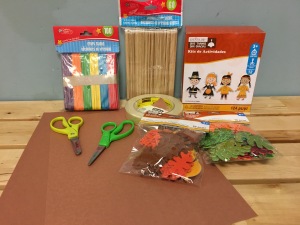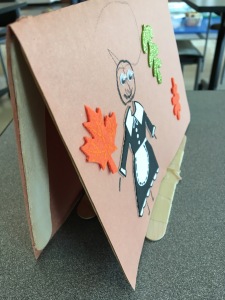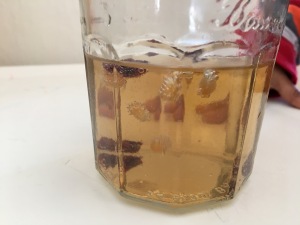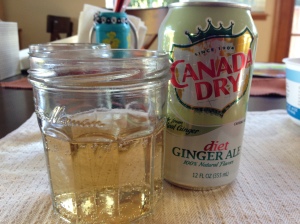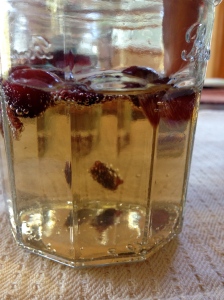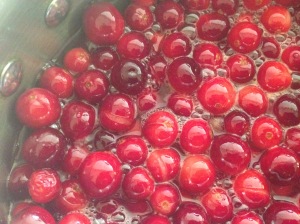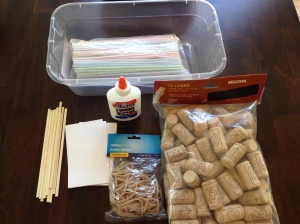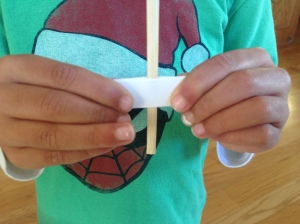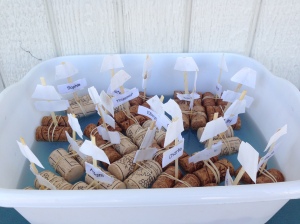While getting ready for Thanksgiving and putting away Halloween stuff, my kids were asking about the Indian corn we use as decor at this time of year. They wanted to see if it was different from the corn we use to make popcorn. That got them interested in popcorn as well. Since I was making cranberry sauce, my kids took some cranberries to study as well. Hence, this Corn and Cranberry Investigation Tray was created.
Here’s what you’ll need to get started:
- Popcorn kernels
- Popcorn
- Indian Corn
- Fresh cranberries
- Dried Cranberries
- Magnifying glasses
- Glass of water

Set up the tray with all the materials. I also added some cut cranberries for my little ones to see how the inside looks like.

The kids loved the Indian Corn and enjoyed examining the different colors and picking them off the cob! My middle son is super crafty and used the kernels to make art projects. I had kernels everywhere!

Next, we compared the popcorn kernel and the popcorn to each other. We could see the bits of kernel in the popcorn. Since we have an air popper at home, we talked about how kernels get heated up and turn into popcorn.

We compared the dried cranberries to the fresh cranberries and were also able to see the seeds inside both of them.
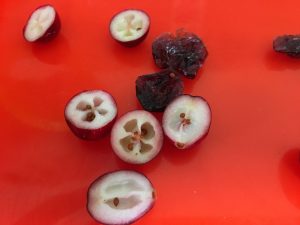
Kids love to add things to water so, of course, I brought out some water for them to test what floats and what sinks. First we started with cranberries. Here’s a whole cranberry.
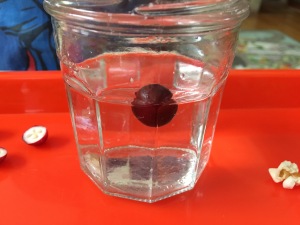
Next we added dried cranberries and cut cranberries.

We discussed why the fresh cranberry floated and why the dried ones didn’t. My older kids were able to figure out that the air pockets kept the fresh cranberry afloat.
Next we tested the popcorn and kernels.

We used similar reasoning for why the popcorn floated but the kernel sunk.
Lastly, they just started dumping everything into the cup because, well, it’s fun!

This was perfect for toddlers and preschoolers. You don’t need much to keep the little ones entertained. But my older sons (ages 6 and 8) were interested in it too.
Extension: If you have some carbonated beverages that are clear, such as Ginger Ale, Sprite, 7up, etc… you can test how the fresh cranberries, dried cranberries, popcorn and corn kernels behave with bubbles! Visit my post Hopping Corn and Cranberries for the bubbly details!
Another idea, which I have not tried, might be to leave a fresh cranberry out and see how it shrivels up and compare it to a dried cranberry. If you try this, let me know in the comments!
The Science Behind the Activity:
Investigating different textures and seeing changes in objects are a great way to discuss cause and effect with little ones. Most of them have eaten dried cranberries and popcorn but have no idea where they come from.
By adding the objects to water, they can learn to make predictions about which objects float and sink in water. For older children, they can investigate how air pockets in cranberries (and other fruits) allow them to float even though they “feel heavy”. For even older kids, you can bring up the concept of density.

